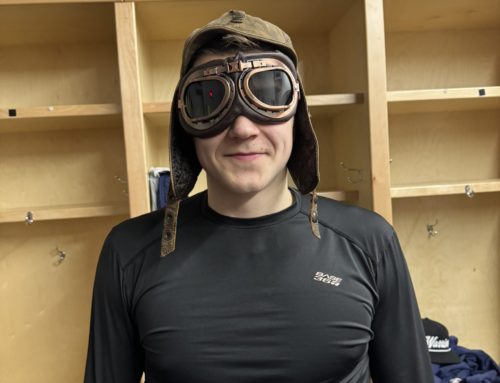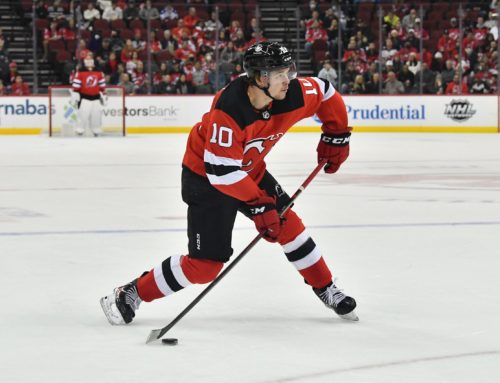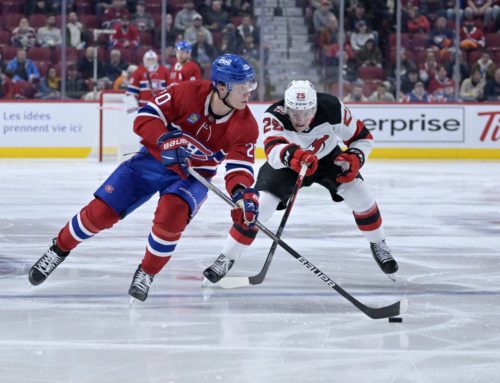The Century Mark: Tomasino and Byfield
Alex Wyatt
2023-04-10
Every month, Alex Wyatt digs into some players who have reached the 100 NHL-games-played threshold, as this is the mark that many leagues use as a threshold for players casting off their minors eligibility.
Philip Tomasino (NAS)
Philip Tomasino had a strong rookie season with the Nashville Predators in 2021-2022, posting 12 goals and 24 assists (11 on the power play) in 76 games. The 20-year-old appeared to be an example of Nashville bucking its long-known trend of stifling their young offensive prospects in exchange for playing boring, reliable veterans as part of a defensive mindset. But then Tomasino started his season with a surprise demotion to the AHL and spent most of his season there. Same old Nashville it seemed.
Tomasino was called up after the trade deadline and has not looked back since. With him recently cresting the Century Mark, what can this season’s small sample size, paired with last year’s full season, tell us about his fantasy value moving forward? Despite the disappointment and uncertainty of his early demotion, Tomasino investors should be happy with the underlying production he is showing since his call up.
His deployment has not changed much from his rookie season. He is seeing similar ice time at both even strength and on special teams, though an extra two-and-a-half minutes a game does add up. What he is doing with the time, when corrected on a per-60-minute basis, is the most encouraging sign here.
It is a smaller sample size—these 18 games at time of writing—than the 76 games he saw last year, but he is providing nearly a point-per-60 more than last year on top of shooting more often and seeing the offence consistency flow through him. He is pacing for a full-season rate of 56 points, an uptick from the 35-point pace he achieved last year. Given that Nashville moved on from Mikael Granlund, Niedereitter and Tanner Jeannot at the deadline, it seems clear that the time for players like Tomasino to make their stamp on the NHL is now.
Tomasino has been seeing more time with Duchene, who was previously spending the majority of his time with Granlund, and can pretty much be pencilled in for top-6 deployment for the rest of the season. Given his development and pedigree, Tomasino owners can finally start feeling comfortable that he has arrived for real this time.
His deployment circle is bigger (more ice time), bluer (better relative Corsi For), and slightly lower down the line (more sheltered) than last year.
I hold Tomasino in several of my leagues, and had planned to hold him even before the late-season call up. Nashville is a defence-first team riding into the sunset of their glory years while the next wave of Predators begins to establish themselves. Cody Glass is finally responding to his prime deployment, Tomasino is getting consistent NHL minutes, and both Johansen (30) and Duchene (32) still have years left on their massive deals. Hold on to Tomasino for now, but keep your ears open. If you can grab a bonafide 70+-point player for him, perhaps you make that move. For now, I’d stay patient and watch the kid grow.
Quinton Byfield (LAK)
Will it be Lafrieniere? Will it be Byfield? It’s gotta be Lafreniere. But it should be Byfield!
What about Marco Rossi?
This was the debate leading up to the 2020 draft—-although in hindsight maybe it should have been Tim Stutzle. Touted as a younger, more physical and complete player than Lafreniere, Byfield has suited up for fewer than a half of the NHL games Lafreniere has thus far. Their point-per-game paces are quite similar, though: at the time of writing, Byfield was pacing for 40 points to Lafreniere’s 39. He has increased a number of per-game stats over last season, and this is only with an extra minute and half of ice time a night.
He has also been given some pretty prime deployment, spending nearly 70% of his even strength time lined up with Anze Kopitar and Adrian Kempe. That trio has maintained the edge in play-driving despite facing tough competition and beginning most shifts outside of the offensive end. These are tough situations for youngsters like Byfield, but being able to absorb tips from a perennial all-star centreman like Kopitar should do wonders for his development.
Byfield has seen a significant decline this season is shooting percentage: he is shooting only 4.8% on the year, after nearly tripling that last year.
His IPP is at 50%, just a slight dip from 66% last year, though his PPIPP% has fallen from 50% to 16%. Given the lift in linemates, this is not surprising, as he may be deferring to Kopitar in certain situations. His secondary assists remain under 50%, with eight of 18 assists being secondary, so even if he is playing set=up man for Kopitar, his passes are effective.
Some other highly touted centres in recent drafts, now perennial names in the upper rounds of fantasy drafts, started slower than we might remember. Drafted first overall in 2013, Nathan Mackinnon made the leap to the NHL right away, and played at a 56 point pace on average, across 300 NHL games played, until 2017-2018 when he broke out for 97 points in 74 games. Sasha Barkov supplied a 39-point place across his first two NHL seasons after going second overall in 2013, before breaking out after those 125 games played. His third season (2015-2016) saw him score 59 points in 66 games, before hovering near or over a point-per-game pace since 2017-18. Elias Lindholm, drafted three picks after Barkov in 2013, had his first 40-point-pace season in 2016-2017, providing a 37 in 82 game for his first 221 games before also providing close to a point-per-game since.
Byfield has yet to eclipse his 100th NHL game, and history shows if we were to give up too early on the players mentioned above, we would live to regret it. If you know about Breakout Thresholds, then you might notice that the breakout for all the players above happened around the season they played their 200th NHL game—Barkov being the earliest, having played 125 games prior to the start of his breakout season. But none of them have Byfield’s exceptional size. the size of Byfield, which could delay his breakout to closer to 400 NHL games played, or five full seasons.
If Byfield were to fall short of the future production provided by these example players given his size, it is reasonable to expect he would be likely to provide a bit more grit than Barkov or Lindholm, given he is nearly a hit per game with far less ice time than those two. All this to say, you would be foolish to give up on Byfield at this stage, and he has been quite quietly productive over the last several games.
If the manager in the league with Byfield is getting antsy, and you can move anything less than a point-per-game player as the key piece for him, and can afford the wait, you would be setting your team up very well for future success. The buy-low window on Byfield will close soon, if it was ever all that open.
Thanks for reading, and see you next month.






